How cool is the Gyrfalcon? Well, let me tell you. A Gyrfalcon perched on a cliff can spot a prey item at a mile away. With laser-like focus it will speed out and kill the smallest songbird or the largest duck. It is not the most agile falcon and does not fly loops around its prey in the air, like some falcons do. Instead, it uses its massively strong wingbeats to fly its quarry down. If you are a ptarmigan at flying full speed across the tundra and there is a Gyrfalcon on your tail, well, my prayers are with you.
And during the winter? Temperatures can be -20ºF and daylight may only last a few hours, but Gyrfalcons are there. Migration is for wussies. Gyrfalcons survive winter in the harshest climate on Earth because they can. 'Nuff said. Check out a few Gyrfalcon photos from the Alaska project this May and June. The bottom line: Gyrfalcons are extraordinary.
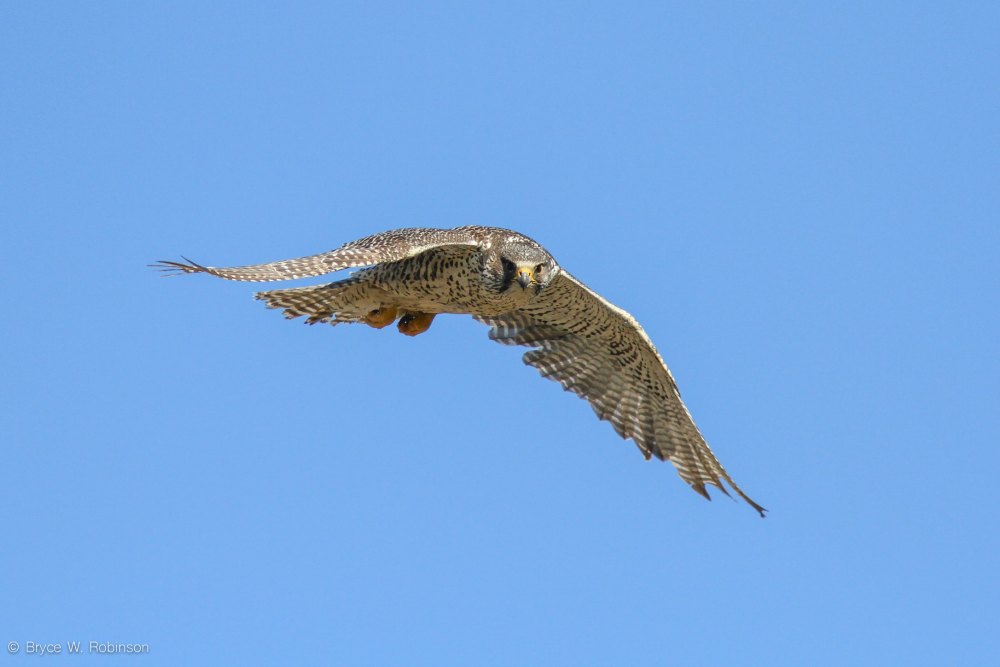
Introducing the royal Gyrfalcon. King of Falcons, Gyrs know they're cool.

If you are a ptarmigan flying across the tundra, this is the last thing you want to see.
To study an extraordinary bird in the Arctic requires extraordinary means. When our team arrived in Alaska in May the rivers where swollen chutes of ice and near-freezing water. The tundra was mostly winter brown, or covered in mushy snow too soft to even walk on.
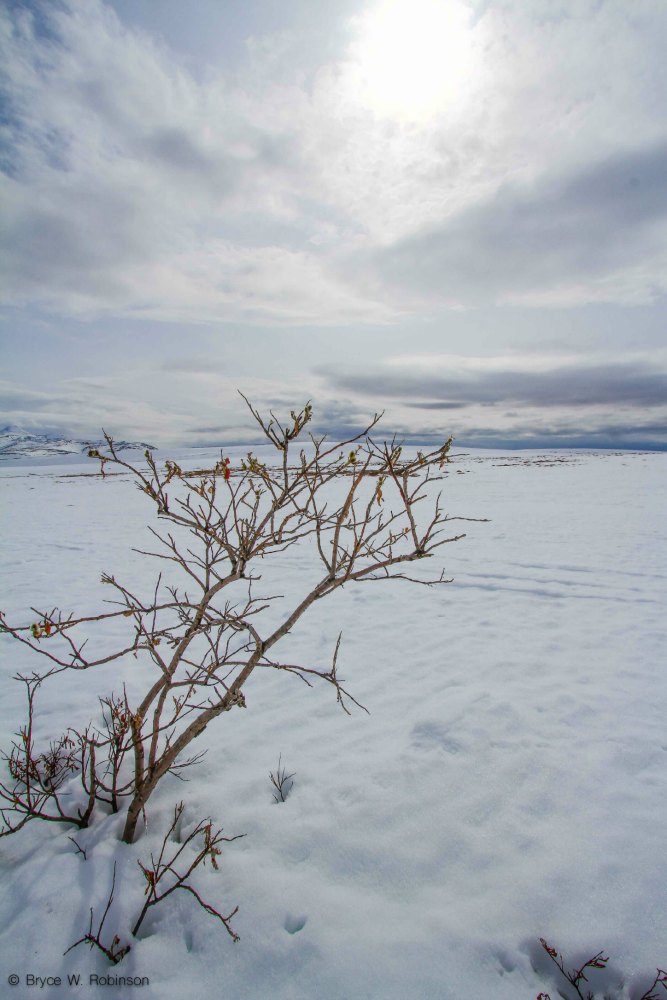
The tundra in May and early June is a snowy place. It may be spring in Arizona, but not here.
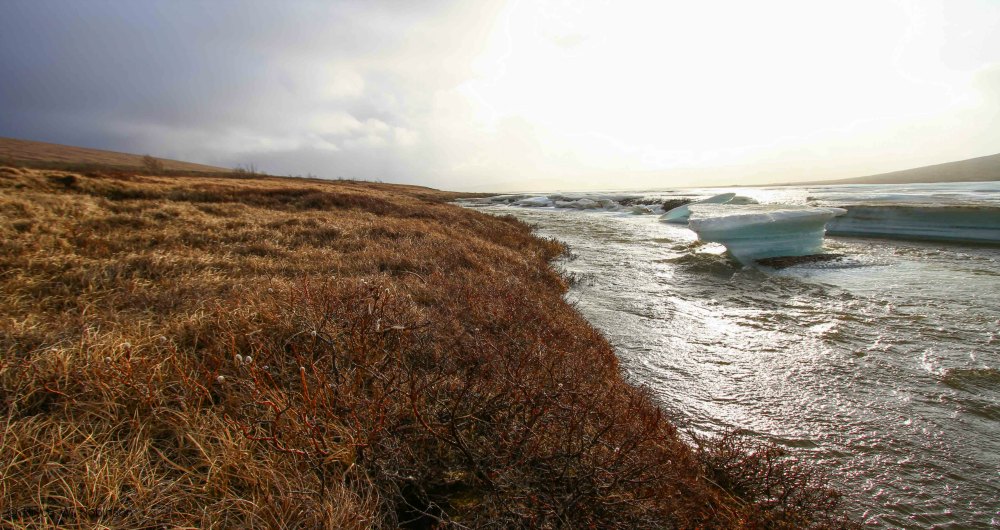
In Alaska even the rivers have icebergs. Getting to the Gyrfalcon nest on the other side is the issue.
How does a biologist get to Gyrfalcon eyries? Any way they can. A typical trip to an eyrie may be by truck, by foot, by ATV, by helicopter, by raft, or all of the above. Consider a recent trip. The crew first sets out to drive many tens of miles on dirt roads that are more pothole than road and will knock your fillings out of your mouth. Next, off-load the 6-wheel ATV from the trailer and follow a 2-track through several feet of snow and many a boggy mud wallow. To cross a river that runs bankfull with water that was still snow just two weeks ago, the crew inflates a pack raft and takes turns ferrying packs of climbing gear across the water. Finally, the climb: on rope with a backpack of gear and a cordless drill slung over one shoulder to install a camera that will record every single prey item the parents bring to the nest.
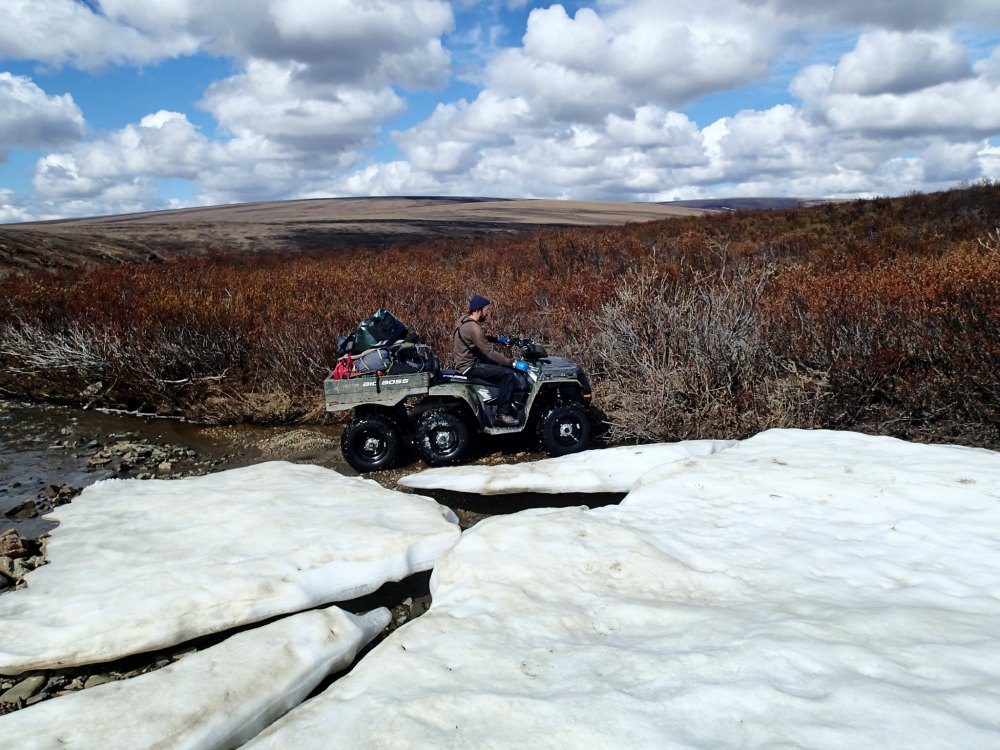
Bryce on his favorite field vehicle: the 6-wheel Polaris Big Boss
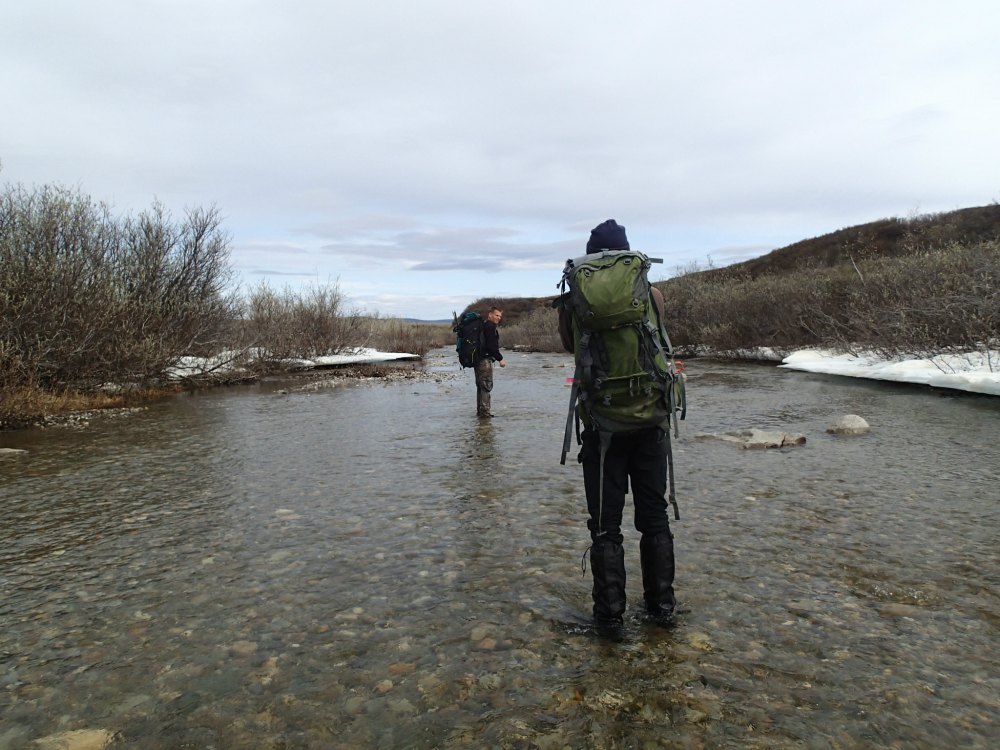
Yes, the water is barely above freezing. No, Bryce (foreground) is not wearing waders.
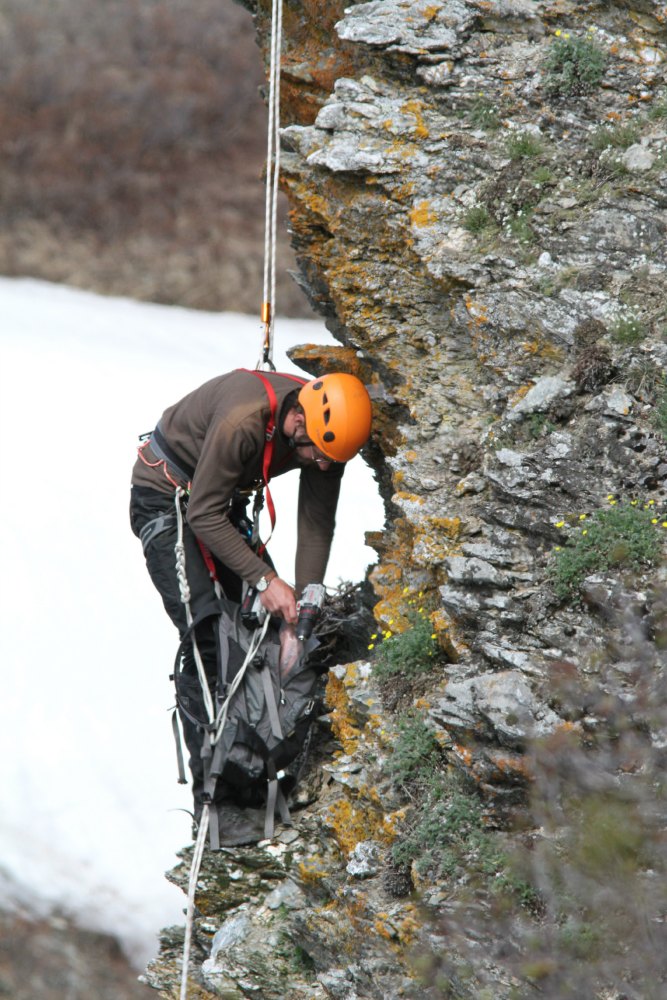
Bryce has a cordless drill in his right hand. He will use it to screw a camera into the cliff, which will record every single prey delivery that the parents bring to the nest. At the end of the season the camera and the screws are removed.
It's worth it. In some parts of the world the Gyrfalcon is considered royalty, known as the King of Falcons. They are big, they're fast, and because of the effects of climate change to the tundra landscape their future is uncertain. Our team is relentless in search of knowledge on what it takes for Gyrfalcon populations to survive and how we can ensure a stable future for this most magnificent of birds. For an extraordinary falcon we'll stop at nothing less than extraordinary means.
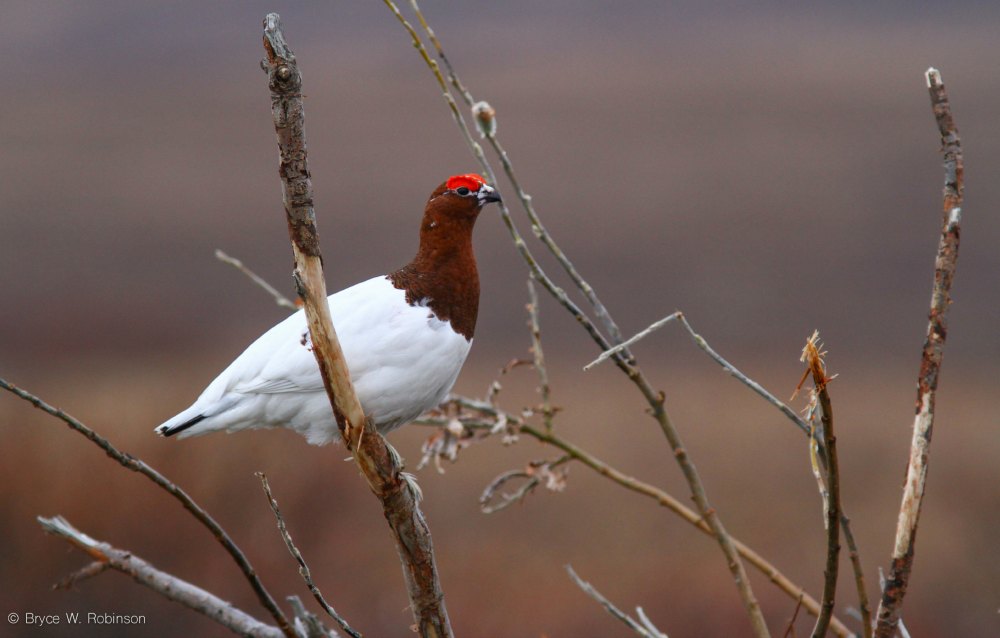
Question: What do Gyrfalcons eat? Answer: The largest falcon in the world eats pretty much whatever it wants. But their preferred prey are ptarmigan. Ptarmigan are a type of grouse and, like Gyrfalcons, do not migrate and spend the entire year in the Arctic. This species is a Willow Ptarmigan. You can tell from the reddish brown neck and head.
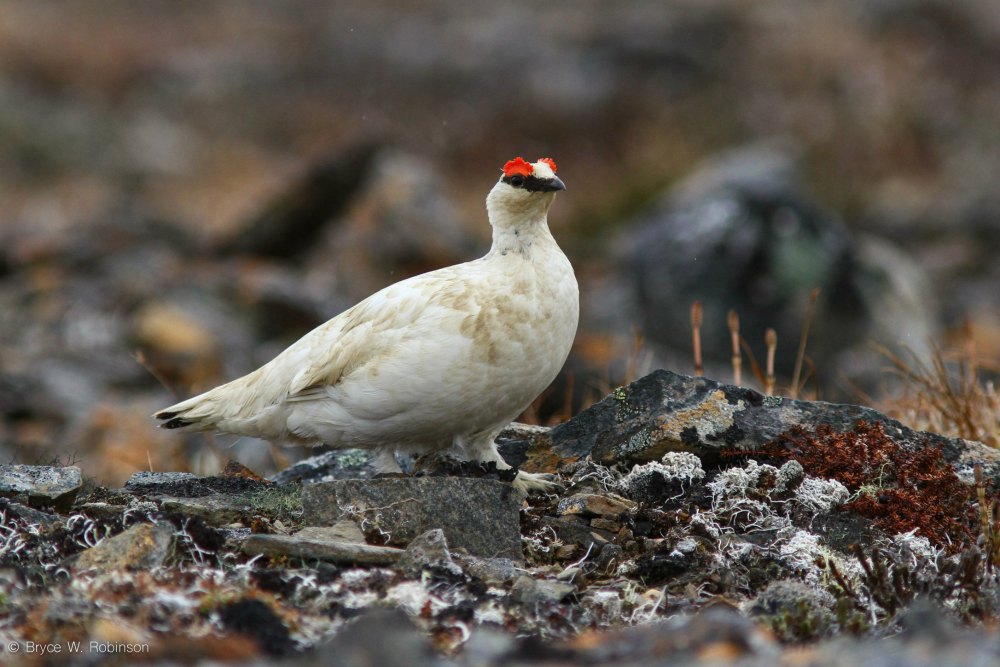
This all white ptarmigan is called a Rock Ptarmigan. Like the Willow Ptarmigan they are preferred prey for Gyrfalcons.
written by David Anderson, 10 June 2015
photos © Bryce Robinson and Ellen Whittle